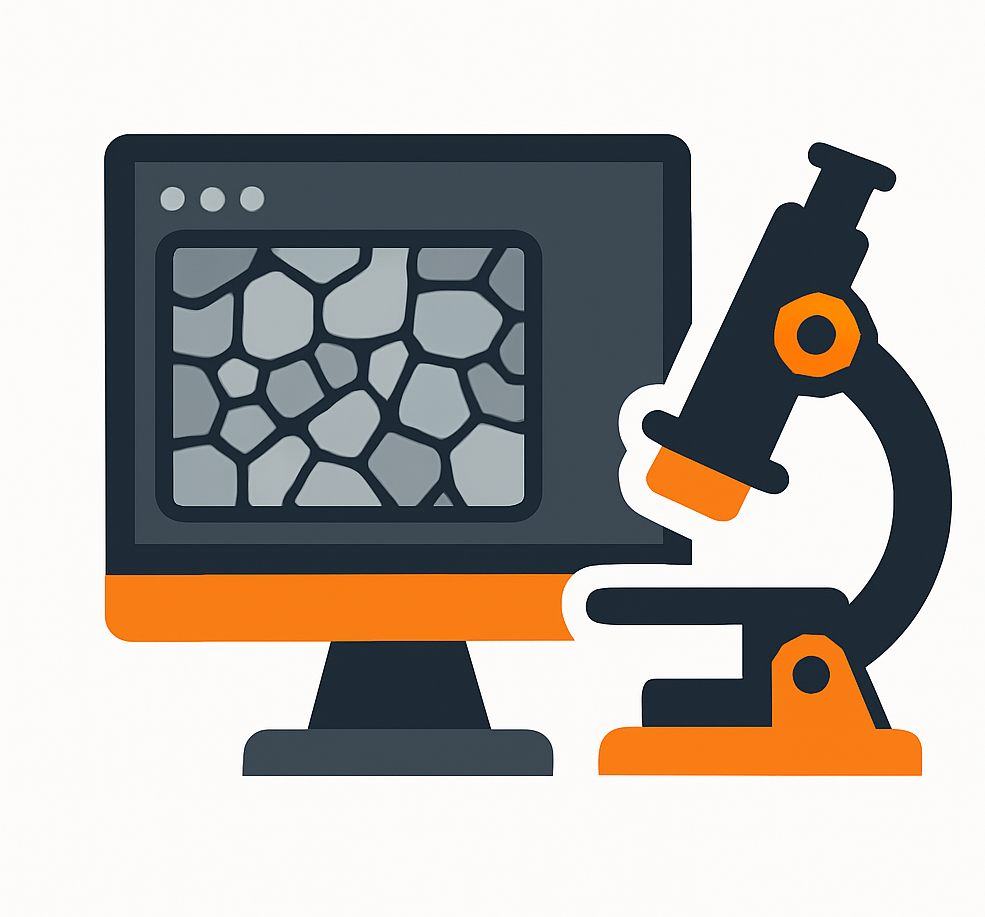

Material Pro is a modular, computer-aided image analysis software designed specifically for metallurgists, laboratory technicians, scientists, and R&D engineers in the metal industry. Built for advanced microstructural evaluation, Material Pro supports tasks in quality control, defect detection, and product development.
The software adheres strictly to ISO and ASTM standards and supports a wide range of image formats (BMP, TIFF, JPEG, PNG, GIF) and input devices including USB 2.0, USB 3.0, and TWAIN-compatible cameras. Material Pro’s high-efficiency image processing delivers up to 80% more image data than comparable systems and streamlines image capture, measurement, enhancement, and reporting.
Key Highlights:
| Modules included | |
| Camera | Capture live images with adjustable settings for white balance, brightness, contrast, hue, and saturation. Images are saved in predefined folders. |
| Calibration | Performed on all microscope objectives. Required again if any hardware is replaced or repositioned. |
| Measurement | Allows manual line/shape tracing. Measurement data can be stored, printed, or exported to spreadsheets. |
| Grain size | Automatic and repeatable analysis using methods like lineal intercept, Snyder & Graft, Abrams, comparison, random intercept, and manual. |
| Porosity | Detects pores using grayscale thresholding. Calculates pore count, min/max size, and percentage as per ASTM B276. |
| Segmentation | Identifies and separates material phases based on grayscale intensity. Supports up to 10 thresholds and colored overlays. |
| Decarburization | Measures depth of decarburization in compliance with ASTM E-1077-91. Analyzes ferritic layers with reduced carbon content. |
| SG Iron | Analyzes nodular graphite in ductile iron (ASTM A247-67, ISO 945-1). Reports nodule count, size (1–8), and form (I–VI). |
| Gray Iron | Measures graphite flakes in gray cast iron. Categorizes types (A–E) and sizes (1–8). Calculates graphite and pearlite percentage. |
| Carbide | Identifies iron carbide (cementite) present in cast iron or steel. Supports carbide banding and intermetallic analysis. |
| Coating thickness | Cross-sectional microscopy measures local metal/oxide coating thickness. Accuracy up to 0.8 mm. |
| Spheroidization | Analyzes spheroidal graphite. Highlights nodules vs non-nodules in blue/red and measures form and size. |
| Non-metallic inclusion | Identifies inclusion types: Sulfide (A), Alumina (B), Silicate (C), Globular (D). Classifies each as thin or heavy. |
| Settings | Initial setup for calibration, scale bar, gallery path, analysis mode, and report format. Offers ISO/ASTM modes and two report templates. |
| Gallery | Image folders categorized by type: Measurement, Segmentation, Grain Size, Porosity, Decarburization, SG Iron, Gray Iron. |
| Save/report | Reports are saved automatically and retrievable anytime. Includes data, images, and analysis parameters. |